How ChatGPT-4o Handles Image Editing: A Practical Workflow Review
 Wayne Huang
Wayne HuangTable of contents
- ChatGPT-4o Image Editing Test: The Real Impact on the Design Field
- The Magic of Simplifying Processes: From ComfyUI to ChatGPT
- Integrating AI into the design workflow
- Concept Development and Visual Experimentation
- Rendering
- Generating and Optimizing Marketing Materials
- Interface Design and Front-End Visual Development

ChatGPT-4o Image Editing Test: The Real Impact on the Design Field
In recent years, the development of generative AI tools has advanced rapidly. With ChatGPT-4o opening its image editing feature, it has brought a new wave of impact and possibilities to the design field. This is not just an evolution of tools but a reshaping of the creative process, with designers' roles and work styles undergoing reorganization. So, what role can this technology actually play in practical design processes?
The Magic of Simplifying Processes: From ComfyUI to ChatGPT
Previously, AI tools like ComfyUI required extensive knowledge and trial and error for image synthesis and style blending. ChatGPT-4o's image editing feature simplifies this with a natural language interface, making it easier for designers to start without programming skills. While ComfyUI is still needed for advanced features, ChatGPT-4o provides an accessible entry point and enhances the design process through interactive communication.
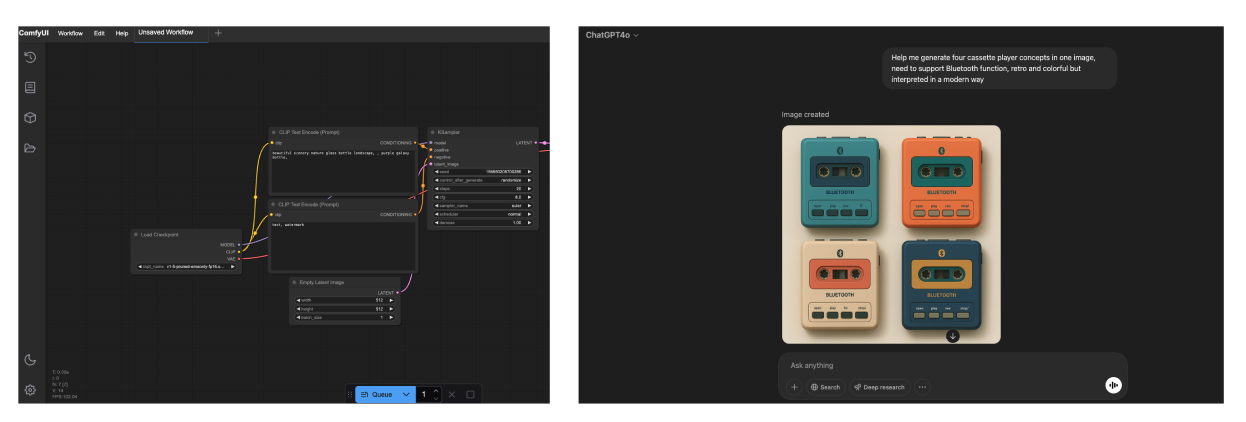
Left image: ComfyUI, Right image: ChatGPT
Integrating AI into the design workflow
Initial Research and Concept Formation
Design usually starts with a lot of market research and trend analysis. AI helps designers quickly understand competitor information and user profiles:
Use AI to quickly gather market research data and user behavior, offering insights on competitor comparisons, demographic profiles, price ranges, and regional preferences.
Use semantic analysis tools to extract community feedback and reviews, highlighting product pain points and potential areas for improvement.
Use ChatGPT and web-based tools to fine-tune product positioning, cultural biases, and regional differences, reducing design risks.
Improve prompt-writing strategies to ensure that image generation tools align more effectively with design goals and brand language.
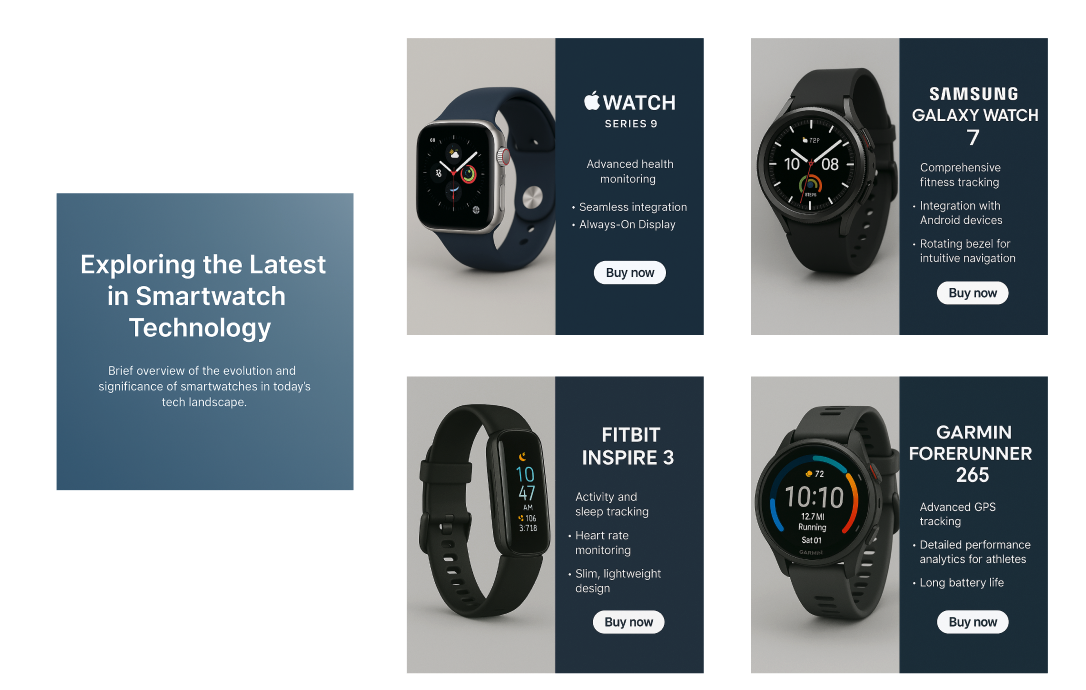
The image above shows a market research infographic for smartwatches, created using ChatGPT's internet connectivity feature to investigate existing smartwatches and their features, plus the image generation function.
This ability to integrate information allows designers to enter the design context more quickly, without spending too much effort on data collection for designers.
Concept Development and Visual Experimentation
Thanks to ChatGPT's powerful language understanding capabilities, we can transform subtle concepts into detailed visuals:
Quick Concept Ideation
Skip the sketching process and use natural language descriptions to quickly generate visual ideas, shortening the visual experimentation cycle.
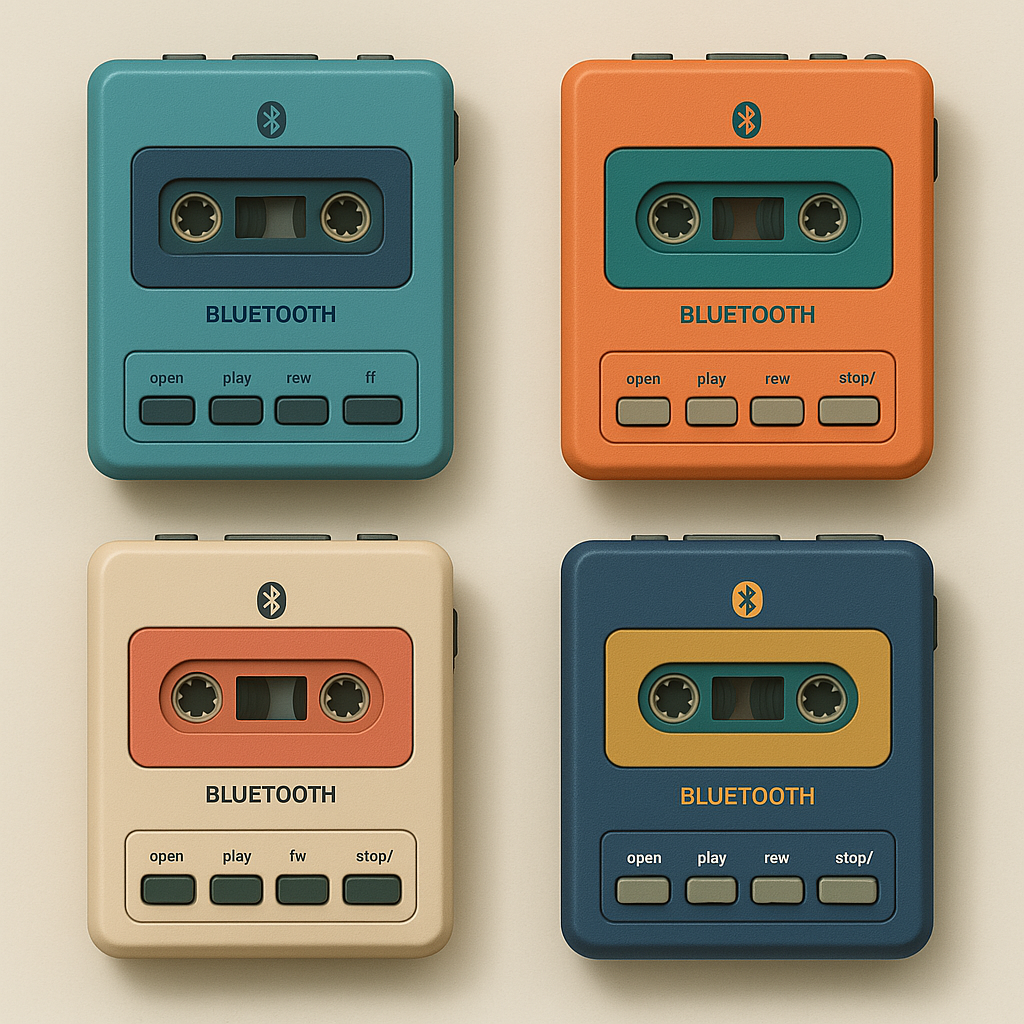
Prompt: Help me generate concepts for four cassette players in one image, needing Bluetooth support, with a retro and colorful style but interpreted in a modern way.
The image above nicely illustrates how modern designers handle this type of retro color scheme, using reduced saturation to minimize color clashes. Although the colors in the image may need slight adjustments, the color scheme can already serve as a reference.
Style Fusion
Use reference images to blend styles and reorganize compositions to explore originality and diversity. Test the collision of contrasting styles, such as combining minimalist design with a handcrafted feel, or incorporating traditional craft vocabulary into tech aesthetics.
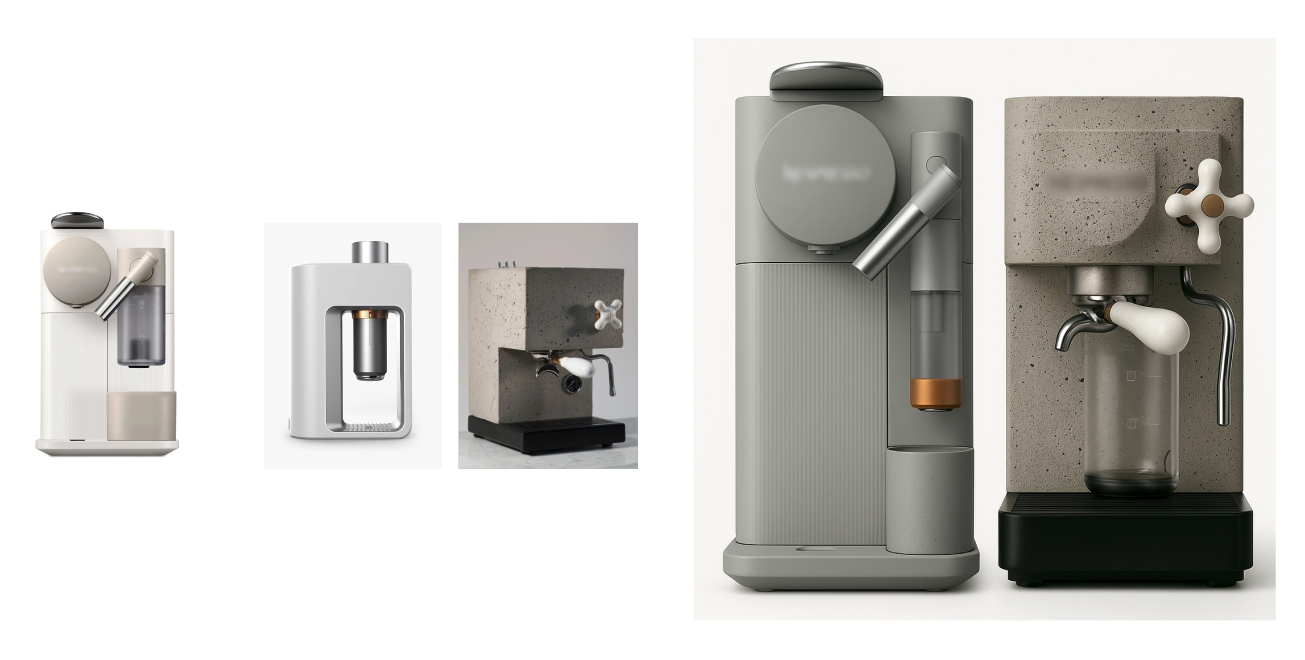
Prompt: Combine the structure on the far left with the CMF from image two and three to generate two concept renderings.
You can see that the style has been successfully applied to the original structure. The gradient surface in the right rendering merges the original circular elements with the geometric elements from the style image, creating a unique blended semicircular surface design. This can offer designers some great inspiration. However, these ideas need to be developed further.
CMF Plan
For the color section, you can give the original image and color swatches to ChatGPT for rendering, which can quickly create a color plan. You can also include material images with the original image for rendering. The image below shows the result of generating a color plan using color swatches.
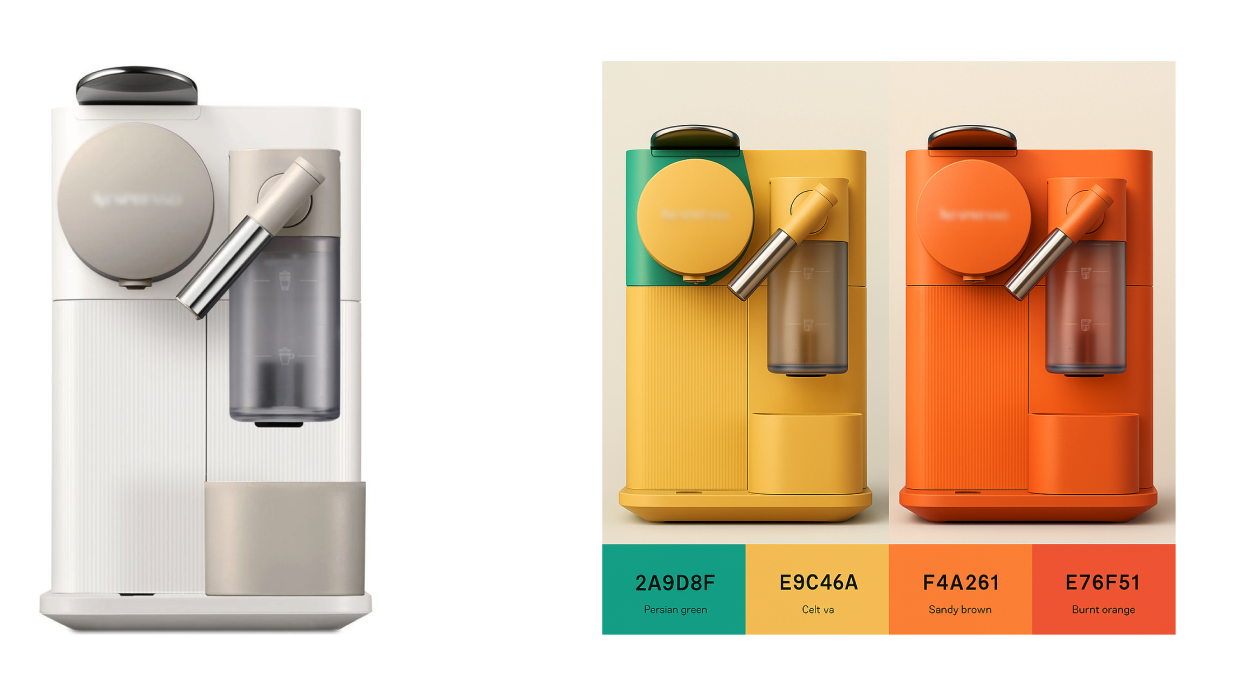
Prompt: Use the left image as a base and create two color plans using the provided color swatches.
You can see that the original material is well-preserved, and the design details are maintained, although the change in proportions is somewhat unsatisfactory.
Rendering
In product design or packaging development, rendering is often the most time-consuming stage. The new ChatGPT 4.0 image editing feature greatly boosts efficiency by speeding up rendering and visual output. This allows designers to spend more time on innovation and building design logic.
Material Rendering/Lighting Scene Rendering
Quickly create multi-angle renderings and material previews to provide the team with reference images before making physical samples.
Use existing images directly for rendering: This allows for real-time changes to light sources and materials, simulating how visuals change in different scenarios. At present, there might still be some distortion in detailed shapes and proportions, so this is best used during the concept development stage.

Prompt: (Image 2) Change the watch strap to light-colored leather / (Image 3) Generate an image that emphasizes the product's outline / (Image 4) Render the original image as a realistic picture / (Image 5) Use Rim Light to highlight the product / (Image 6) Enhance exposure
Contextual Rendering
Generate contextual images based on input images to simulate how the product looks in a real space. Currently, AI can still make mistakes, such as showing a left foot wearing a right shoe, so multiple adjustments and corrections to the image are necessary.
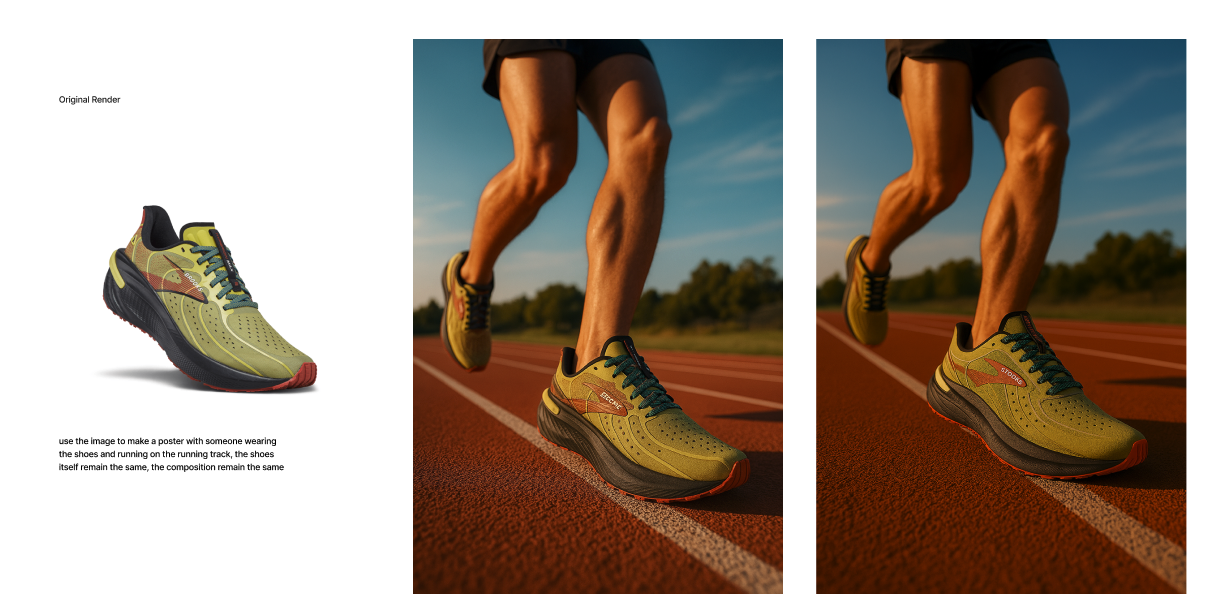
Prompt: Use the provided original image (running shoes) to generate a close-up contextual image featuring the shoes.
Special Effects Simulation
Incorporate particle effects and liquid dynamics simulation to create visual effects that usually need animation or special effects software. This allows these effects to be generated directly through image creation.
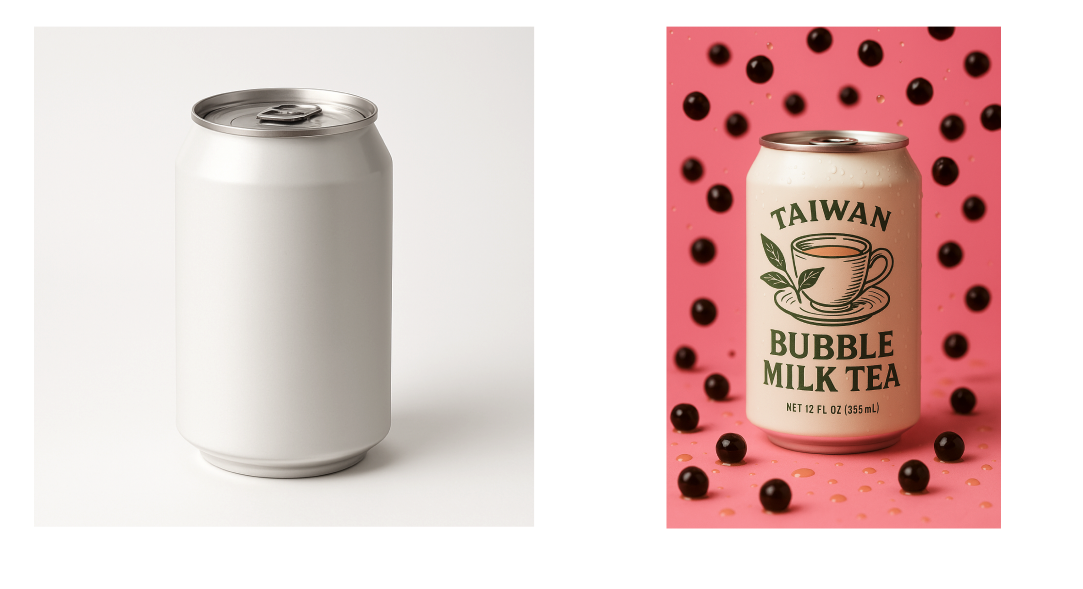
The white model photo above and the illustration on the right are both generated images. The image on the right can simulate the appearance of condensation droplets.
Exploded View
Although the technology still needs improvement, AI can partially replace the need for creating exploded views, which are useful for technical communication or user instructions.
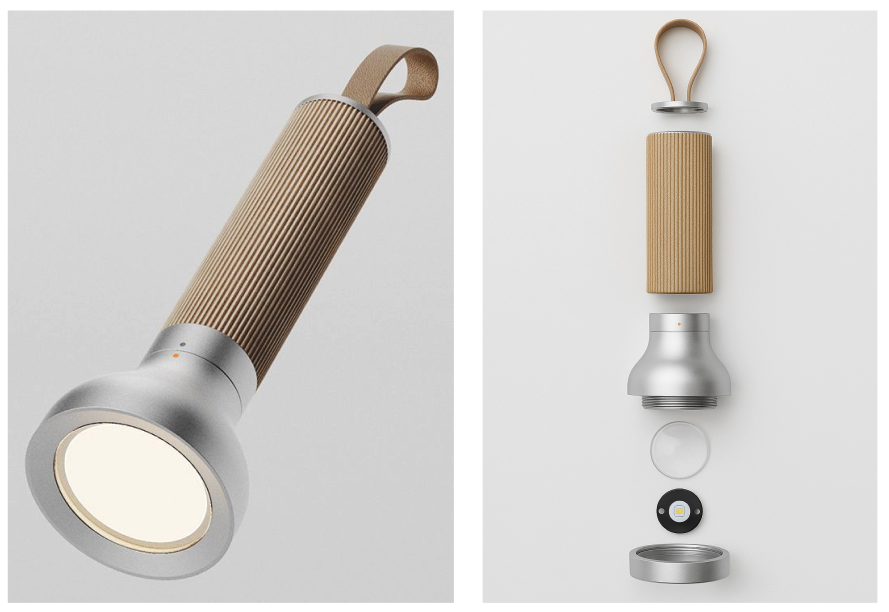
Instruction: Take the original image of the flashlight, disassemble it, and lay the parts flat on a white sheet of paper.
Generating and Optimizing Marketing Materials
Previous AI image generation tools have been able to create marketing images quite well. Thanks to ChatGPT's improved text stability, generating usable images directly is no longer a challenge.
AI will significantly impact collaboration between design and marketing teams. Many repetitive visual tasks can now be handled by marketing personnel.
Background Removal and Line Drawing Generation
Quickly produce images with backgrounds removed and technical line drawings to effectively enhance the visual efficiency of instructional documents and teaching resources.
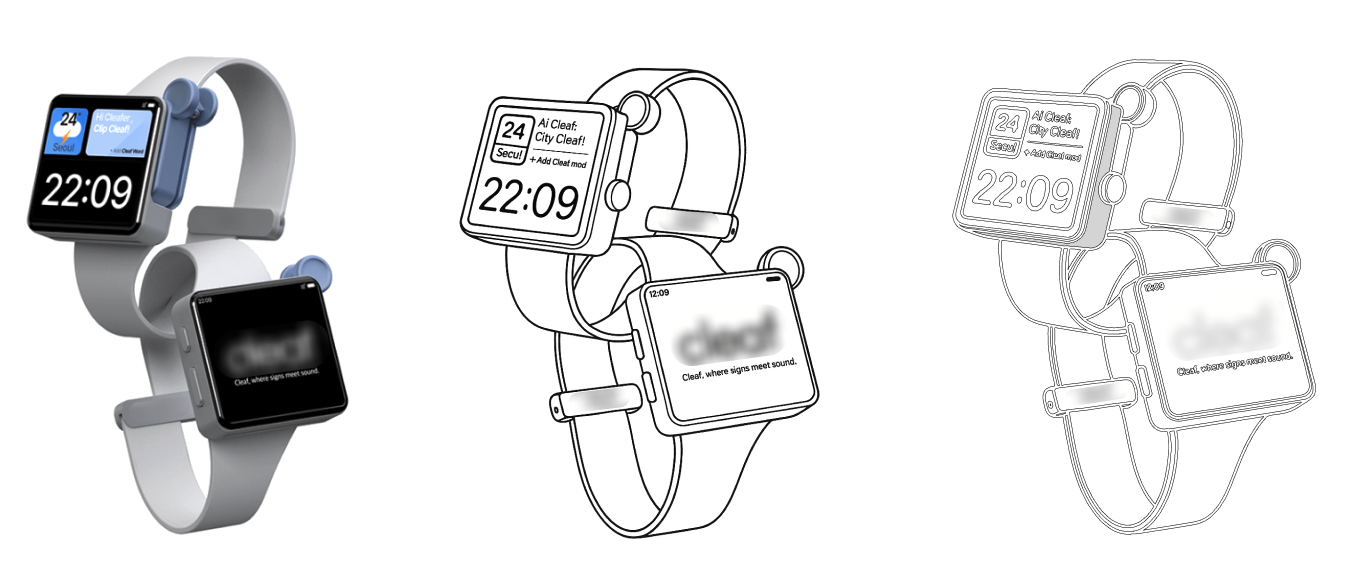
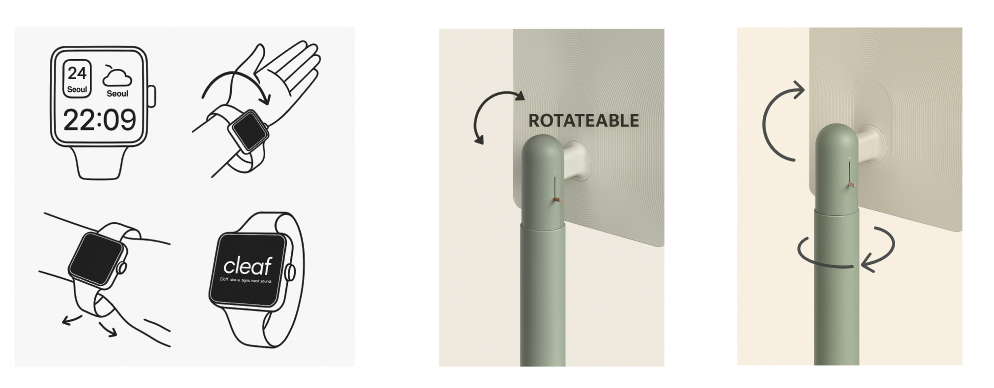
You can also generate related diagrams for operations to speed up the creation of instructional documents.
Generate Posters
Create packaging proposals and poster design samples based on sketches or layout drafts for initial review and discussion.
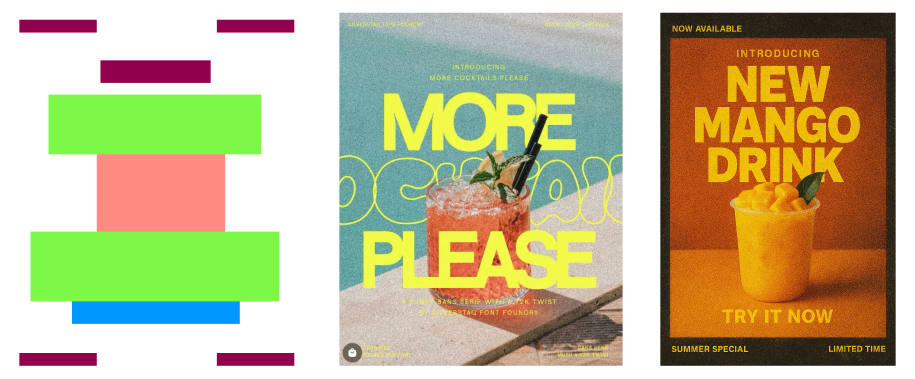
The image on the far right is generated based on the two images on the left and can be designed with specific layouts.
You can also ask ChatGPT to provide text and generate corresponding posters or promotional materials. It's important to optimize the layout of the generated poster (far right) to better complete the text.
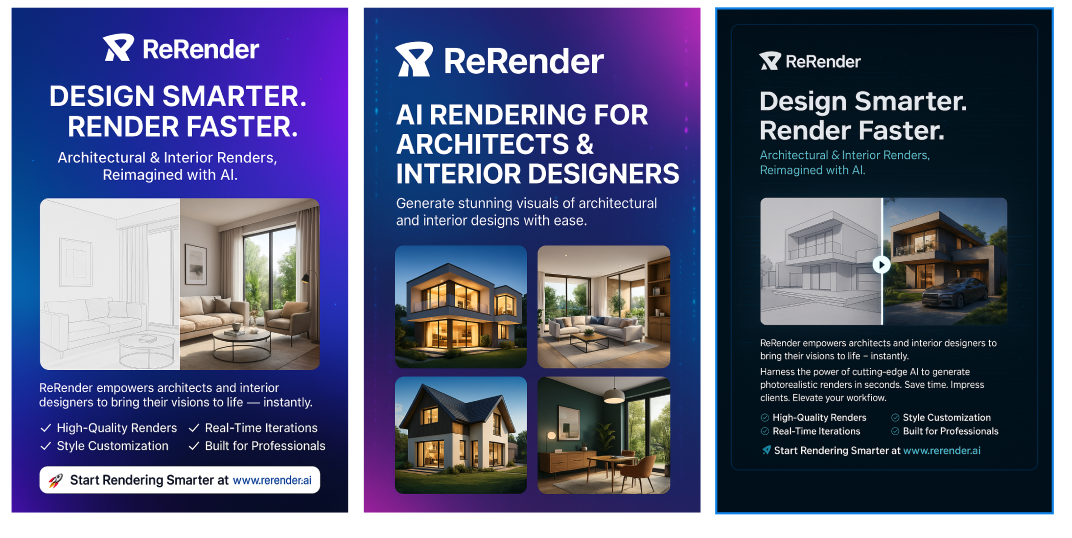
Currently, poster generation is not yet perfect.
You can also use products and templates for generation
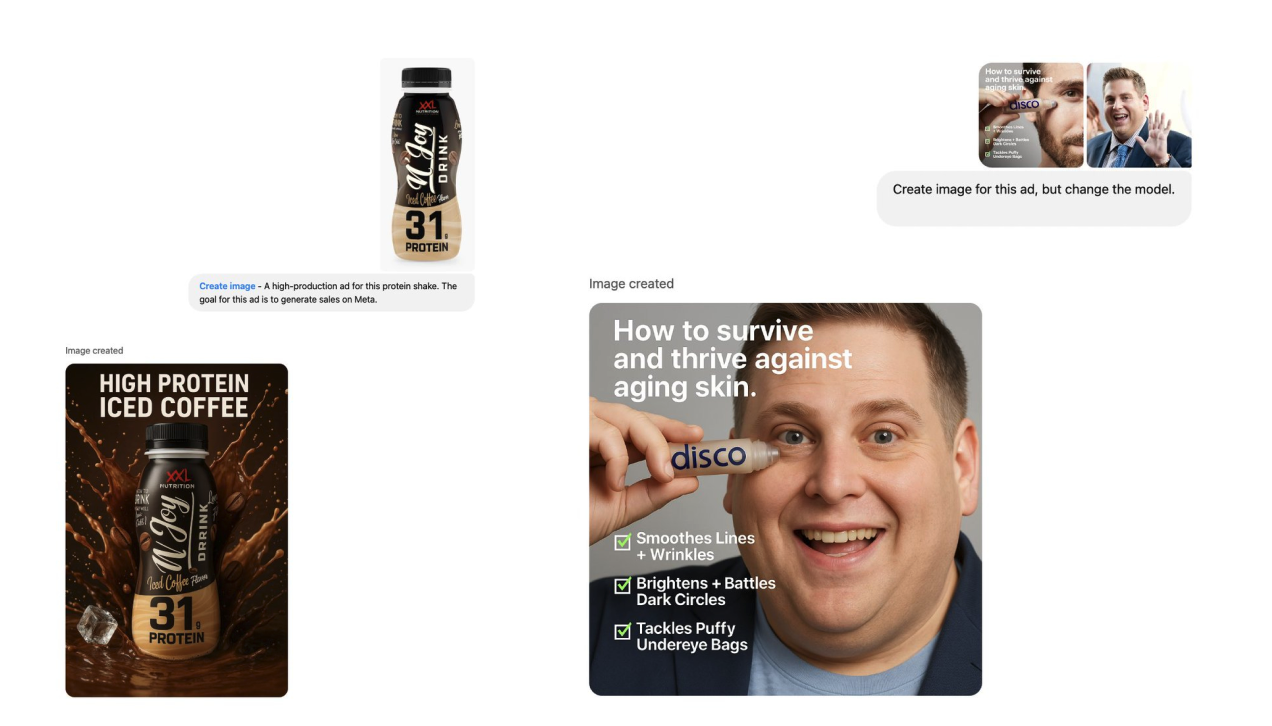
You can also use existing product images to create posters (left image) or replace people in existing posters (right image), which is very useful when a brand changes its spokesperson.
Generate Holiday and Themed Images
Apply holiday or themed styles to automatically create social media images and text, reducing the daily workload for designers. ChatGPT can understand the characteristics of different holidays and adjust the images accordingly.
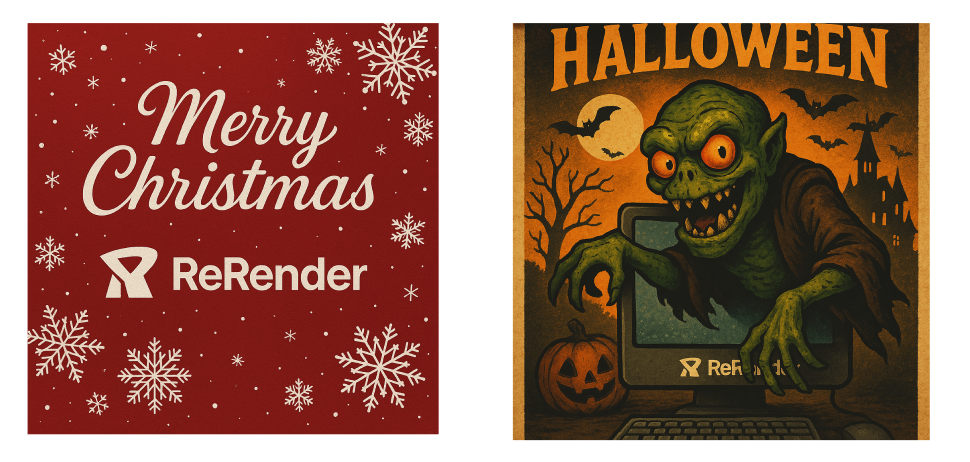
Currently, there are still some issues with reproducing logos, so it's important to use them carefully.
Model Replacement
You can quickly generate photos of different models using the same product, providing greater flexibility in creating marketing materials. This reduces the reliance on photographers and models.
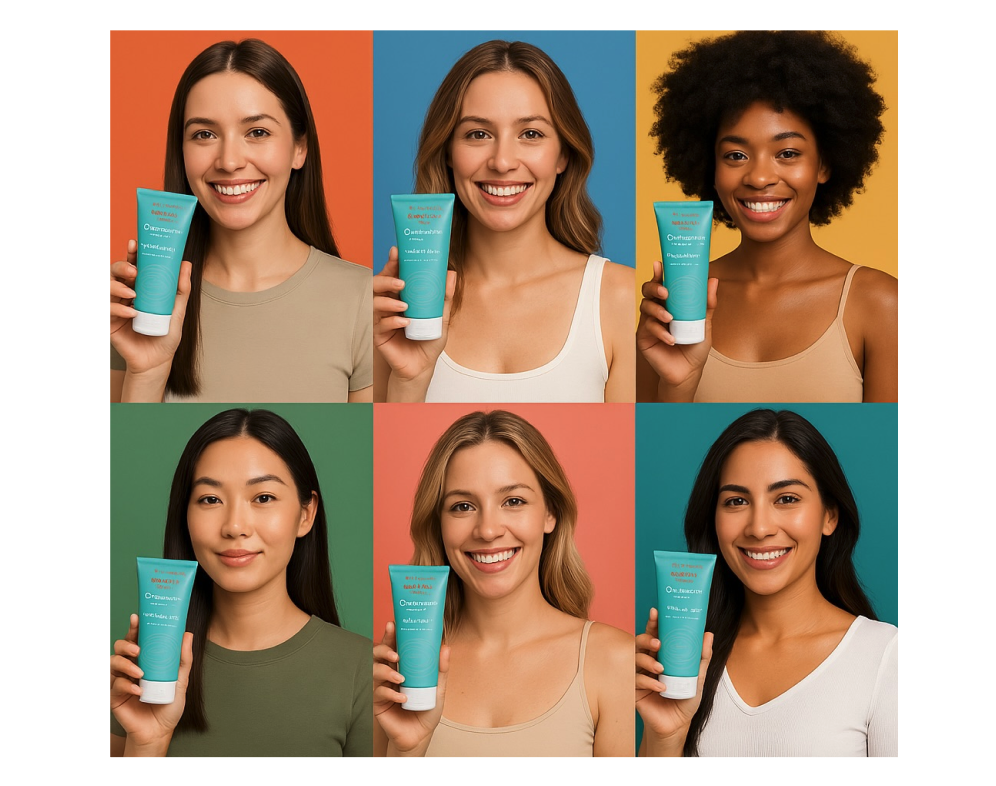
Video Generation
By using video generation platforms like Runway, we can convert images into video outputs. With pre-designed storyboards, we can break a video into segments ranging from 5 to 10 seconds and generate them separately. Finally, we edit these segments together to complete the video.
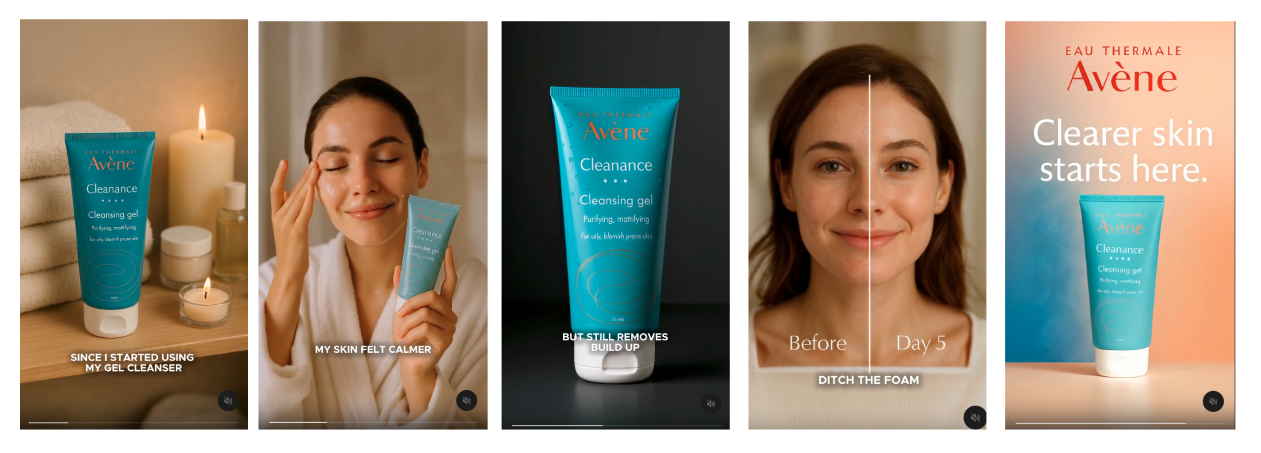
Through these applications, the design team can focus on visual strategy and brand consistency, while AI tools support daily productivity.
Interface Design and Front-End Visual Development
Creating mockups and generating the corresponding website code is becoming easier and easier. For example, replacing all the slogans and logos only requires a short prompt to assemble. You can also use ChatGPT to directly generate a webpage design and provide the corresponding code.
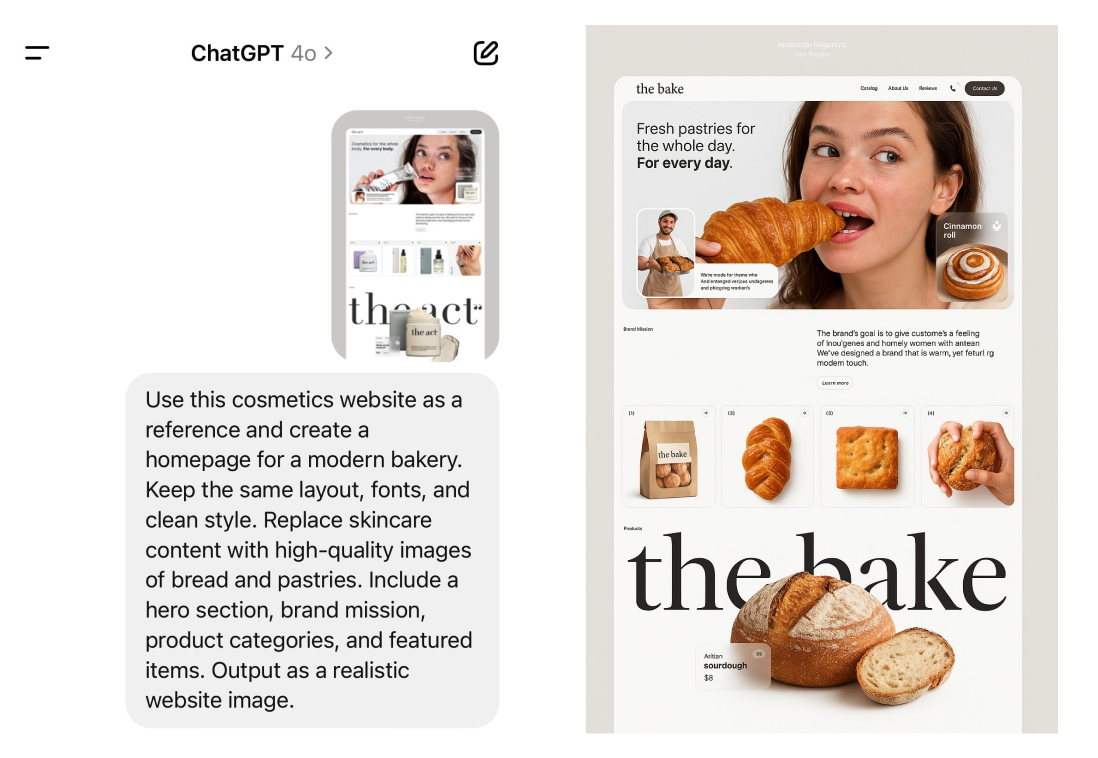
Batch change multiple elements in design images, such as fonts, colors, and proportions, to greatly improve adjustment efficiency.
Upload the generated elements to a website creation platform like V0 to quickly create a similar website template.
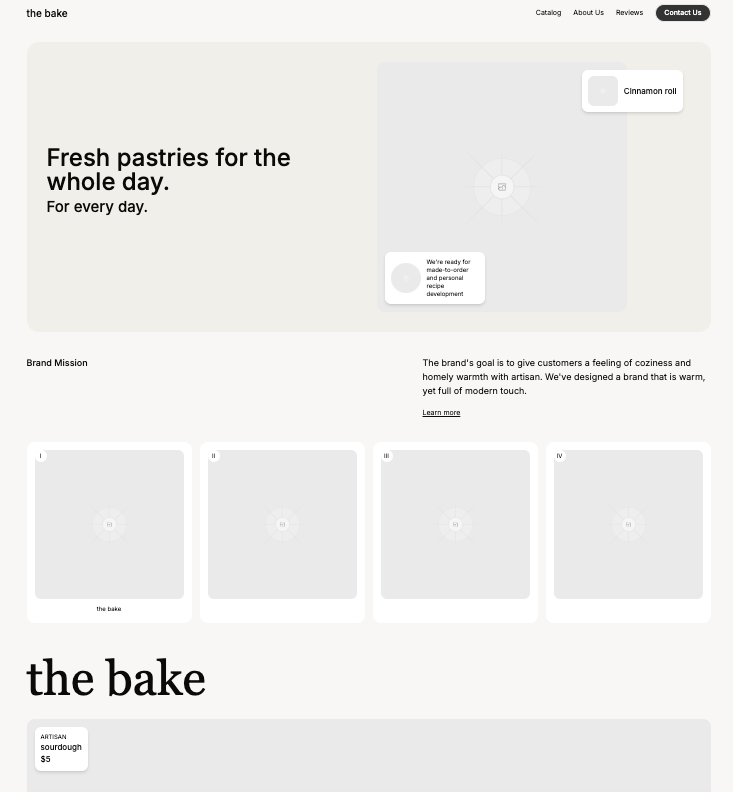
Insights: Redefining the Role and Value of Designers
These examples highlight a common trend:
The parts of the design process that used to take a lot of time, the "basics," can now be assisted by AI.
This doesn't mean a designer's work is less important. Instead, it emphasizes the designer's core value in ideas, taste, and judgment. The training designers received in the past is not wasted; it transforms into design intuition and taste. More and more designers now see AI as a partner, breaking down and reorganizing traditional processes to create new workflows.
AI will be a tool that enhances a designer's abilities, amplifying their ideas and taste while reducing the limitations on creativity. In the future design field, it won't just be about tool proficiency, but about who can best use AI to create truly impactful design experiences.
Start learning and adapting to this tool now, and build your own AI design workflow!
If you are an architect or interior designer, there are ready-made AI design workflows available for you to use now. Check out ReRender (Architecture Design) and ReRoom (Interior Design) to give them a try!
Subscribe to my newsletter
Read articles from Wayne Huang directly inside your inbox. Subscribe to the newsletter, and don't miss out.
Written by
